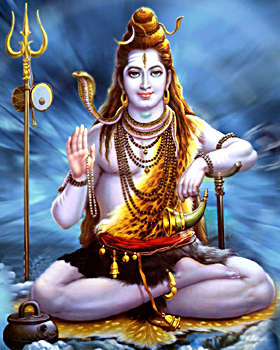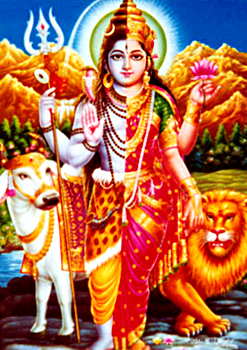 Prapancasara Tantra is one of the important Shaivite texts of Tantra literature. This work is ascribed to the philosopher Shankara which is said to be an incarnation of Lord Shiva. Prapanca means `the expansion` or the `expanded universe`, and the tem Prpancasara means the `essence of the universe.` The work commences with an account of Creation. This is followed by treatises on chronology, embryology, anatomy, physiology and psychology. These are no more scientific than the succeeding chapters on the occult doctrines of Kundalini and the secret significance of the Sanskrit alphabet and the Bijas.
Prapancasara Tantra is one of the important Shaivite texts of Tantra literature. This work is ascribed to the philosopher Shankara which is said to be an incarnation of Lord Shiva. Prapanca means `the expansion` or the `expanded universe`, and the tem Prpancasara means the `essence of the universe.` The work commences with an account of Creation. This is followed by treatises on chronology, embryology, anatomy, physiology and psychology. These are no more scientific than the succeeding chapters on the occult doctrines of Kundalini and the secret significance of the Sanskrit alphabet and the Bijas.
According to the general teaching of the Tantras, the human organism is a microcosm, a miniature copy of the universe. He contains innumerable canals (nadi) through which some secret power flows through the body. Connected with these canals there are six great centres (chakra) lying one above the other, which are also furnished with occult powers. The lowest and most important of these centres contains the Brahman in the form of a Linga, and coiled round this Linga like a serpent, lies the Sakti called Kundalini. This Kundalini is forced up into the highest centre by Sadhana and Yoga and then salvation is attained. The Bijas and Mantras, that is, the letters and syllables and the formulas composed from them, contain the secrets to a powerful influence on the human organism and the universe. These are the mean to the attainment of the highest perfections (Siddhi).
 The chapters on the rituals for consecration (Daksha), the worship of the mothers and the meditations on the Devi are of considerable significance from the point of view of the history of religion. Chapter XVIII teaches the Mantras and Dhyanas (meditations) for the worship of the love god and his Saktis, and the union of man and woman is presented as a mystical union of the ego (Ahamkara) with knowledge (Buddhi) and as a holy act of sacrifice. If the man honours his beloved wife in this manner, then, wounded by the arrows of the love god, she will follow him as a shadow even into the other world (XVIII, 33). Chapter XXVIII is dedicated to Ardhanarisvara, the god who is half female- the right half of his body is in the form of Lord Shiva who is represented as a wild-looking man, and the left half is his Sakti, represented as a voluptuous woman.
The chapters on the rituals for consecration (Daksha), the worship of the mothers and the meditations on the Devi are of considerable significance from the point of view of the history of religion. Chapter XVIII teaches the Mantras and Dhyanas (meditations) for the worship of the love god and his Saktis, and the union of man and woman is presented as a mystical union of the ego (Ahamkara) with knowledge (Buddhi) and as a holy act of sacrifice. If the man honours his beloved wife in this manner, then, wounded by the arrows of the love god, she will follow him as a shadow even into the other world (XVIII, 33). Chapter XXVIII is dedicated to Ardhanarisvara, the god who is half female- the right half of his body is in the form of Lord Shiva who is represented as a wild-looking man, and the left half is his Sakti, represented as a voluptuous woman.
Chapter XXXIII, with which the work originally seems to have closed, devotes its first part to a description of ceremonies to prevent childlessness, which is the result of carelessness in the worship of the gods and of scorning the wife. The second part deals with the relationship between teacher and pupil, which is of paramount importance in the Sakti religion.
The ritual and the Mantras described in this Tantra are not limited to the worship of the various forms of Devi and Shiva, but frequently Lord Vishnu and his Avataras are also referred to. Chapter XXXVI contains a reflection on Vishnu Trailokyatnohana (the confounder of the triple world).
Thus discussed is the Prapancasara Tantra, one of the important works of Tantra literature.



















